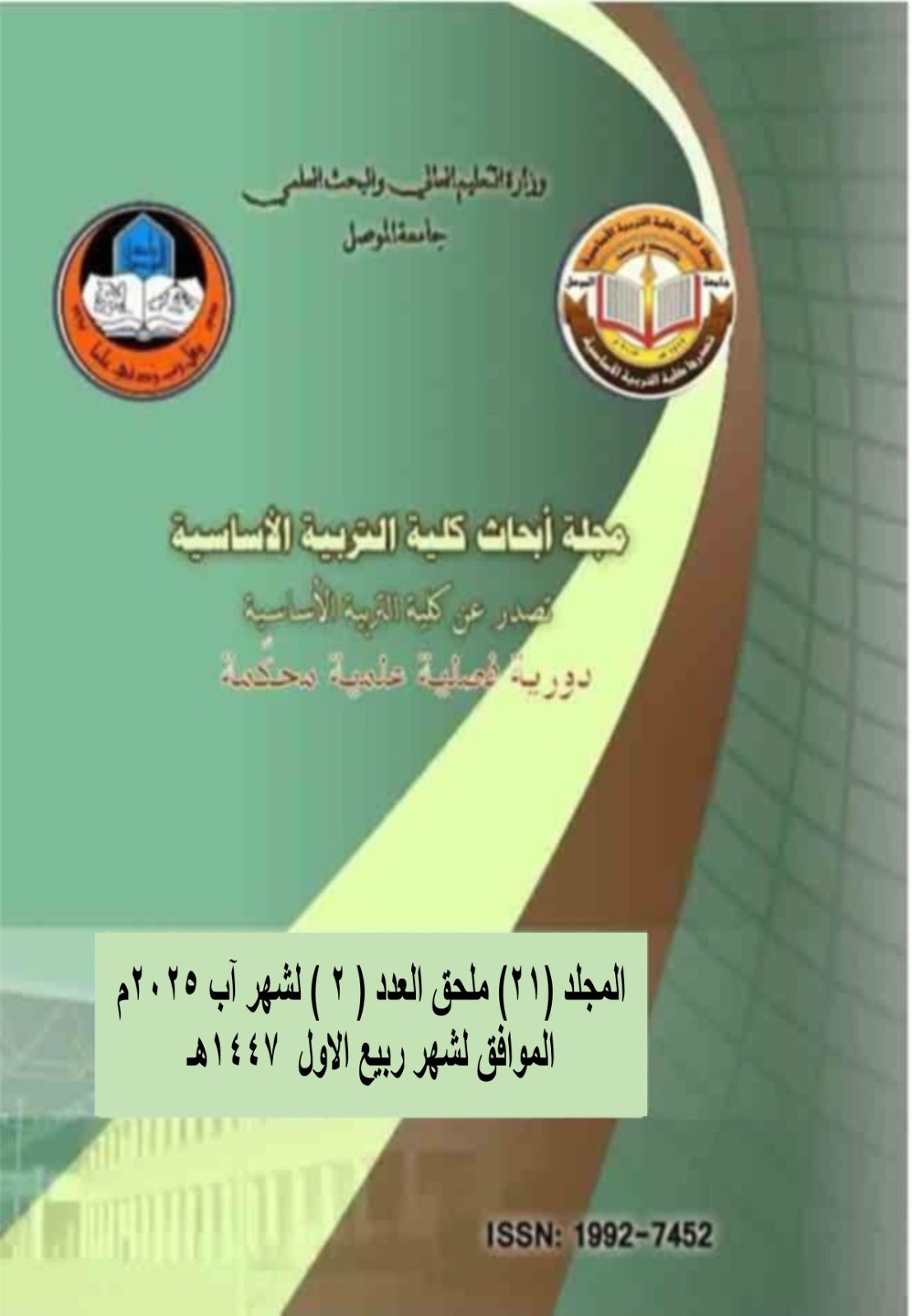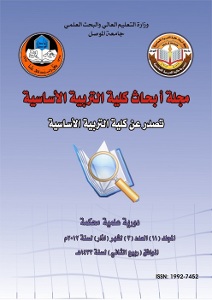The effect of urea fertilization on the yield and oil of medicinal plants , sweet cumin, fenugreek, coriander and anise, which are always cultivated
Abstract
Seeds of sweet fennel, anise, coriander, and fenugreek were planted in the Mosul Dam area on 20/12/2017 under rain-fed conditions, with the application of nitrogen fertilization in the form of urea. Fertilizers were broadcast on 21/1/2018, and the seeds were harvested starting from 2/6/2018. The percentage of active essential oils was estimated using a Soxhlet apparatus, with two types of organic solvents—petroleum ether and ethyl alcohol—employed. The volatile oil content was measured according to the A.O.A.C. method, commonly used for estimating elements, oils, carbohydrates, and other compounds.
The results were statistically analyzed using a Randomized Complete Block Design (RCBD) and processed via the SAS software (SAS, 1985). Means were compared using the LSD test at a 5% probability level. The statistical analysis revealed that coriander significantly outperformed the other cultivated plants in terms of yield per dunam, primarily due to anise's lack of drought tolerance, as the cultivation relied solely on rainfall. Additionally, sweet fennel showed a significantly higher oil production compared to the other plants.
The study aimed to evaluate the success of rain-fed cultivation for these species and assess whether rain-fed agriculture, supplemented with nitrogen fertilizers, is economically viable. It also examined the impact on productivity—both quantitatively and qualitatively—as well as the percentage of volatile oils in the four species, which play a crucial role in producing antioxidants and phenolic compounds with significant medicinal value.
References
- -ابو زيد، الشحات نصر (1986). النباتات والأعشاب الطبية، منشورات دار البحار، بيروت، لبنان.
- - أبو زيد، الشحات نصر (1988). النباتات العطرية ومنتجاتها الزراعية والدوائية، الدار العربية للنشر والتوزيع، القاهرة ، مصر
- الموصلي، مظفر احمد (2015). خصوبة التربة وتغذية النبات (النظري والعملي). دار دجلة. الاردن -3
- - 4-الموصلي، مظفر احمد (2016). الكامل في الاسمدة والتسميد. دار الكتب العلمية. لبنان
- - 5خلف، يحيى بني ومسلم، اياد. (2000). زراعة النباتات الطبية تحت الظروف البعلية. المركز الوطني للبحث والارشاد الزراعي. وزارة الزراعة الاردنية .
- -دلالي، باسل كامل وصادق حسن الحكيم.(1987). تحليل الأغذية، وزارة التعليم العالي والبحث العلمي، جامعة الموصل .
- محمد زهير البابا , 1990 , تاريخ الطب والصيدلة في الحضارات القديمه, دار المعارف -7
- References
- -A.O.A.C. (2000). Official Methods of Analysis of the Association of Official Analytical Chemists , 17ed, Maryland. USA.
- - 9-.Arslan, N., B. Gürbüz, O. Sarihan, A. Bayrak, A. Gümüscü. 2004. Variation in essential oil content and composition in Turkish anise (Pimpinella anisum L.) populations. Turk J. of Agri. For. 28, 173-177.
- Ashorabad, E.S.; Matin, A.; M.H. Lebaschi, (2003) Investigate of physiological growth indices in fennel (Foeniculum vulgare) in different methods of soil fertilization Iranian. J. of Medicinal and Aromatic Plant. Sic. 25:113-118 .
- .
- -.Amerikova,A.,pencheva EI-Tibi, I., Maslarska , V ., Bozhamov , S ., & Tachkov , K , (2019) . Antimicrobial activity , mechanisum of action , and methods for stablisiation of defensins as new therapeutic agents. , Biotechnology & Biotechnological Equipment , 33 (1) 671 -682 .
- Albornoz, F. Crop responses to nitrogen overfertilization: A review. Sci. Hortic. 2016, 205, 79–83. [Google Scholar] [CrossRef] .
- -Bashir, S.; Safdar, A. Coriander Seeds: Ethno-medicinal, Phytochemical and Pharmacological Profile. Sci. Spices Culin. Herbs-Latest Lab. Pre-Clin. Clin. Stud. 2020, 2, Recent studies revealed that different kinds of alkaloids, essential oils, fatty acids, flavonoids, phenolics, reducing sugars, sterols, tannins, and terpenoids were extracted from C. sativum.
- - Dalali, Basil Kamel and Sadiq Hassan Al-Hakim (1987). Food Analysis, Ministry of Higher Education and Scientific Research, University of Mosul.
- Chrysargyris, A., Drouza, C., & Tzortzakis, N. (2017). Optimization of potassium fertilization/nutrition for growth, physiological development, essential oil composition and antioxidant activity of Lavandula angustifolia Mill. Journal of Soil Science and Plant Nutrition. vol.17 no.2 .
- Cioanca, O.; Hancianu, M.; Mircea, C.; Trifan, A.; Hritcu, L. Essential Oils from Apiaceae as Valuable Resources in Neurological Disorders: Foeniculi vulgare aetheroleum. Ind. Crops Prod. 2016, 88, 51–57. [Google Scholar] [CrossRef].
- -Cuevas-Cianca, S.I.; Romero-Castillo, C.; Gálvez-Romero, J.L.; Juárez, Z.N.; Hernández, L.R. Antioxidant and Anti-Inflammatory Compounds from Edible Plants with Anti-Cancer Activity and Their Potential Use as Drugs. Molecules 2023, 28, 1488. https://doi.org/10.3390/molecules28031488.
- - Dahiya P, Purkayastha S. Phytochemical Screening and Antimicrobial Activity of Some Medicinal Plants Against Multi-drug Resistant Bacteria from Clinical Isolates. Indian J Pharm Sci. 2012 Sep;74(5):443-50. doi: 10.4103/0250-474X.108420. Erratum in: Indian J Pharm Sci. 2012 Nov;74(6):563.
- . Dalali, Basil Kamel and Sadiq Hassan Al-Hakim (1987). Food Analysis, Ministry of Higher Education and Scientific Research, University of Mosul.
- El Gendy A.G.;Taghred A.; Hegazy and El-Sayed S.M.(2013).Effect of biofertilizers and/or urea on growth, yield, essential oil and chemical compositions of Cymbopogon citratus plants.J. Appl. Sci. Res.9(1):309-320 .
- El Karkouri, J.; Bouhrim, M.; Al Kamaly, O.M.; Mechchate, H.; Kchibale, A.; Adadi, I.; Amine, S.; Alaoui Ismaili, S.; Zair, T. Chemical Composition, Antibacterial and Antifungal Activity of the Essential Oil from Cistus ladanifer L. Plants 2021, 10, 2068. [Google Scholar] [CrossRef ].
- --Garg, V. K.;)2004) Yield, mineral composition and quality of coriander (Coriandrum sativum)and fennel (Foeniculum vulgare) grown in Sodic soil. Indian Journal of Agricultural Sciences 74: 221-223.
- - Hussein, Fawzi Taha Qutb (1981). Medicinal Plants, Their Cultivation and Components, Dar Al-Marikh for Printing and Publishing, Riyadh, Saudi Arabia.
- -.Lawless, J .1999. The Illustrated Encyclopedia of Essential Oils, The Bridgewater Book Company Ltd., Shaftesbury, pp. 44–45.
- -Page,A.L.; R.H. Miller and D.R. Keeney.(1982). Methods of soil analysis, Part 2 : Chemical and microbiological properties. Agronomy Series No.9 Amer. Soc. Agron. Soil Sic. Soc. Am. Inc. Madison. U.S.A.
- -SAS.(1985).Statistical analysis system. SAS institute Inc. Cary NC.27511.U.S.A .
- -Sayed-Ahmad, B.; Talou, T.; Saad, Z.; Hijazi, A.; Merah, O. The Apiaceae: Ethnomedicinal Family as Source for Industrial Uses. Ind. Crops Prod. 2017, 109, 661–671. [Google Scholar] [CrossRef] [Green Version .
- -Sayed Ahmad, B.; Talou, T.; Saad, Z.; Hijazi, A.; Merah, O. The Apiaceae: Ethnomedicinal family as source for industrial uses. Ind. Crops Prod. 2017, 109, 661–671. [CrossRef .






